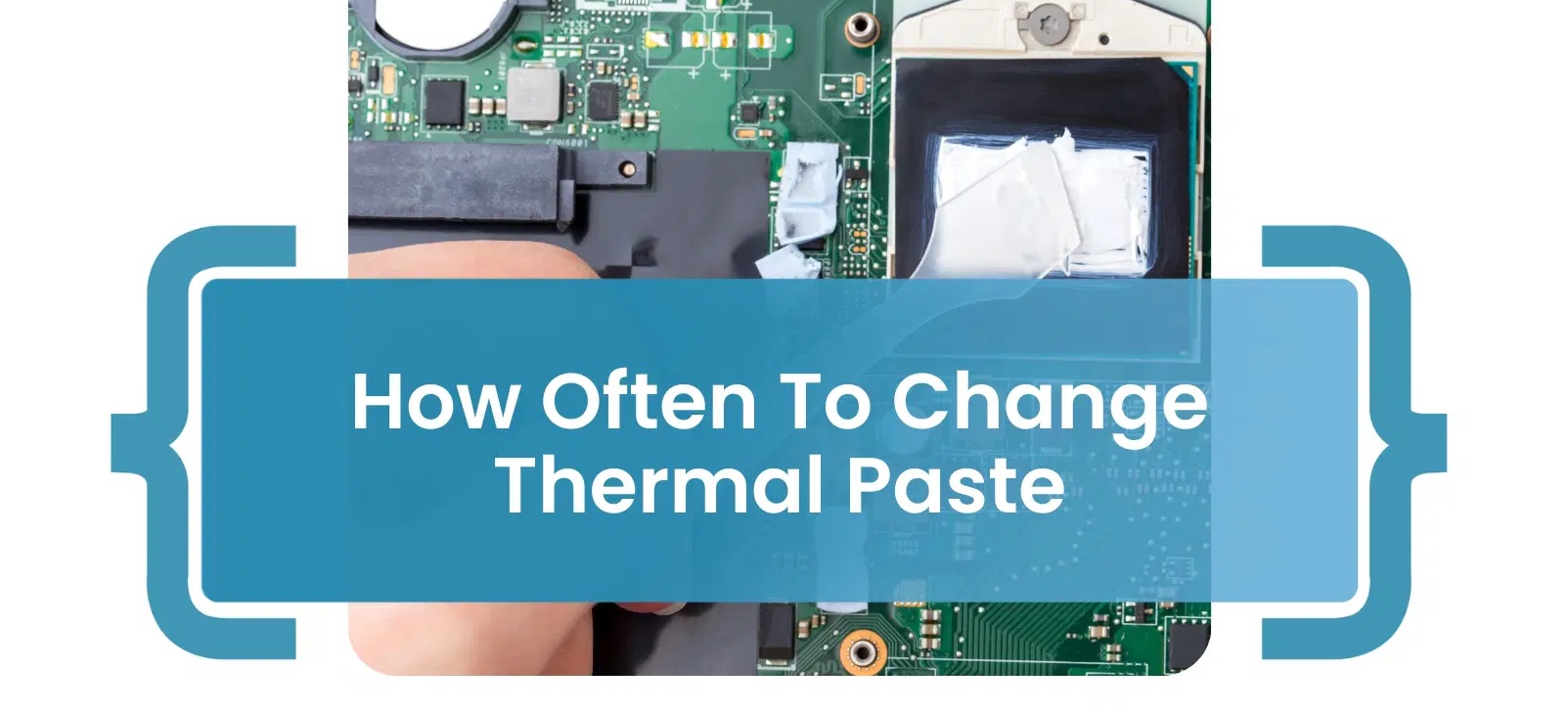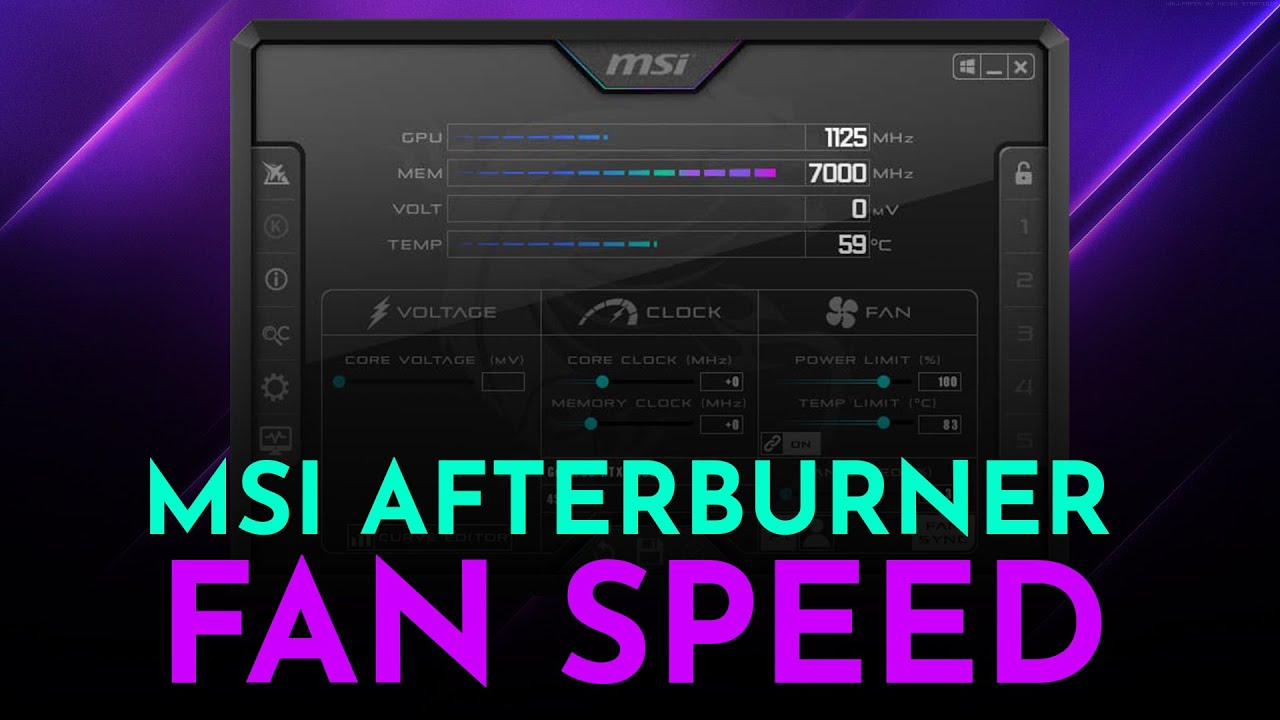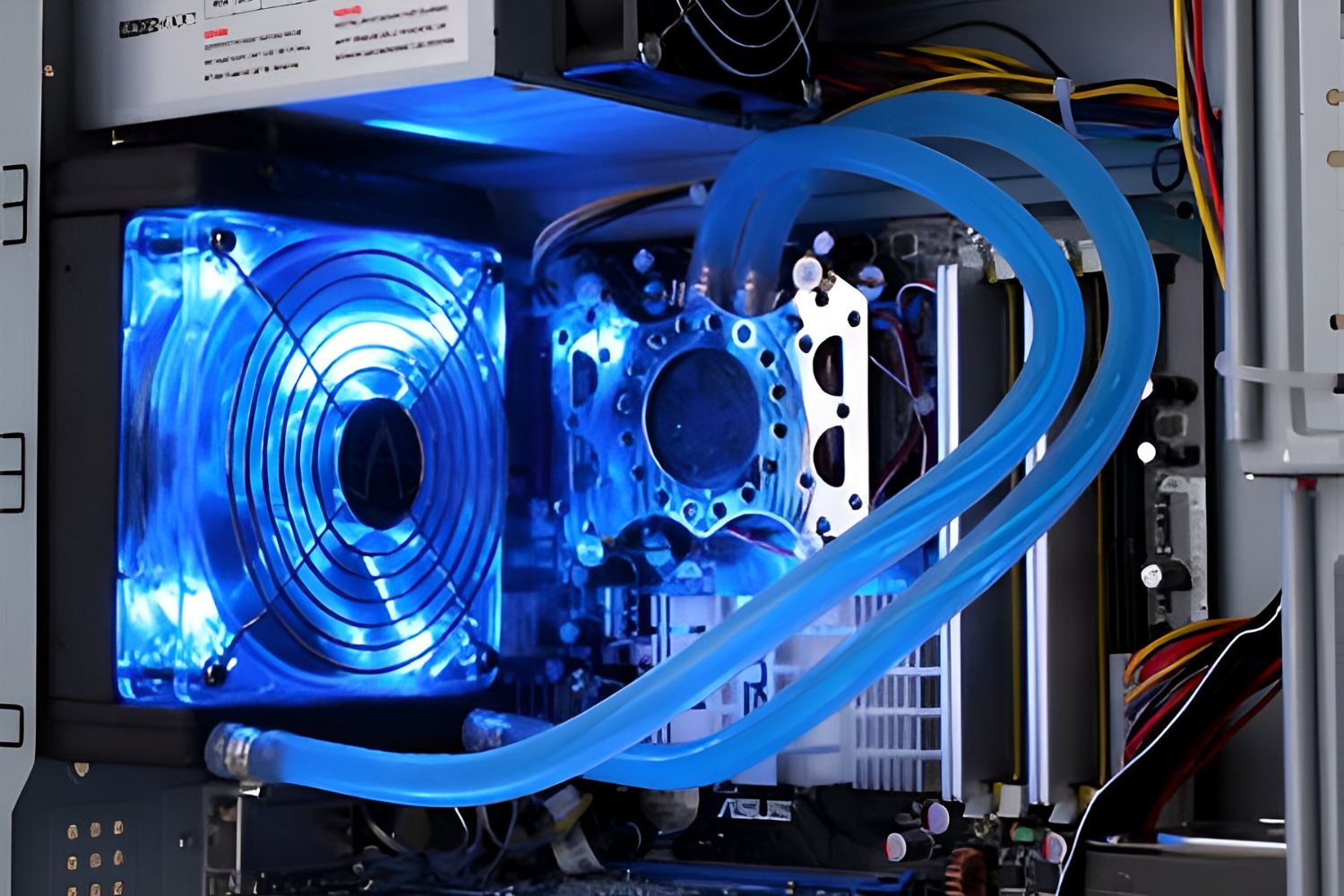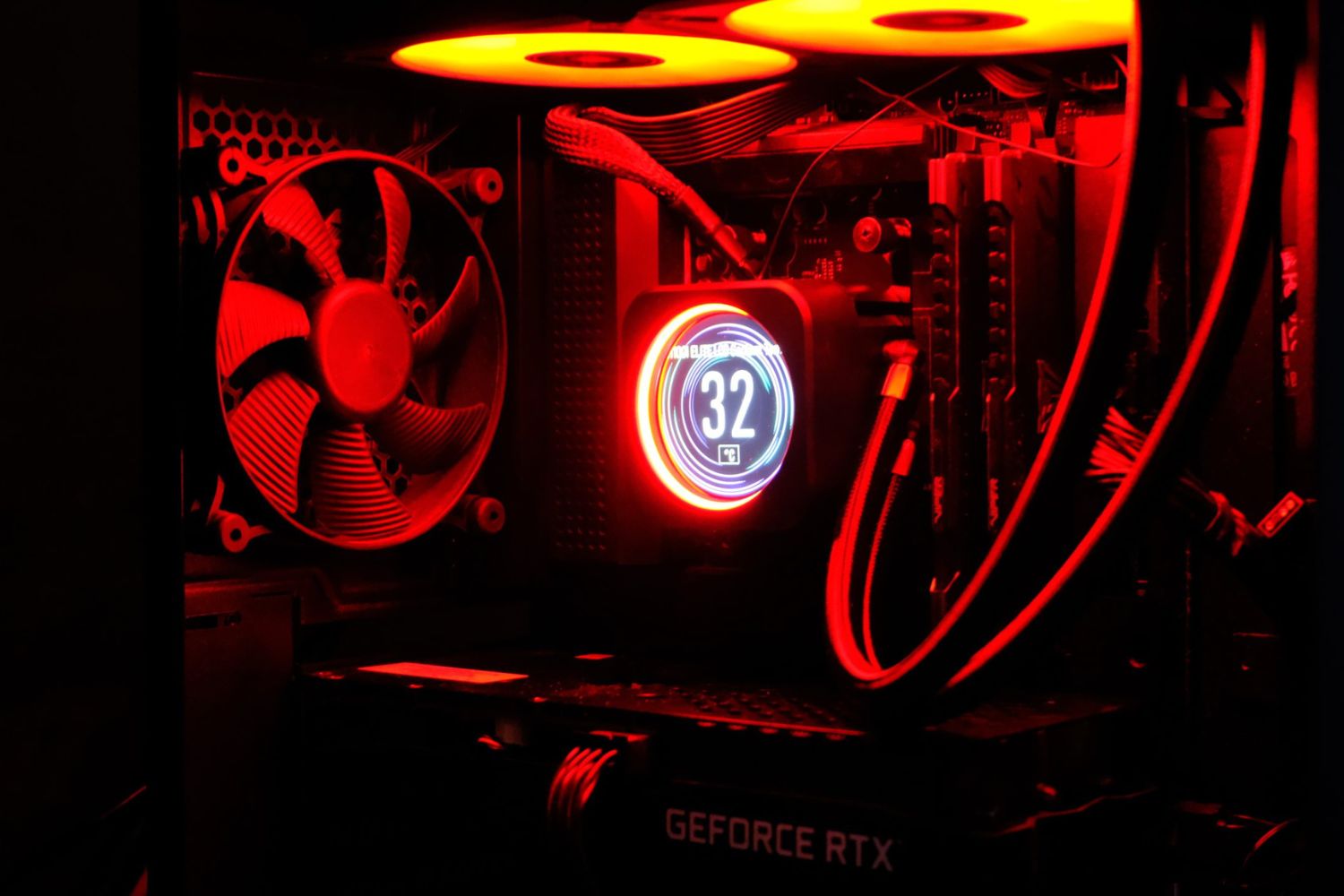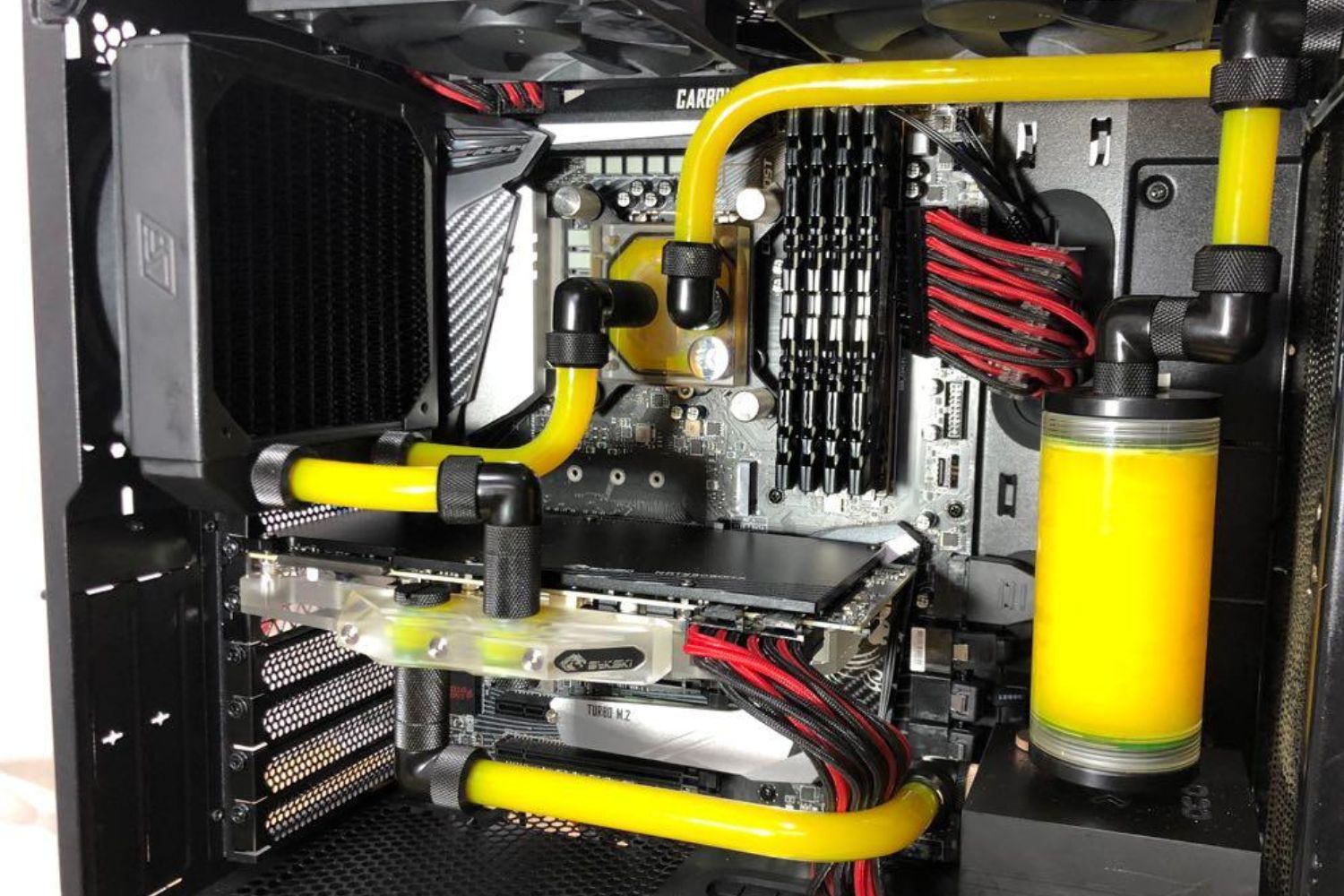Introduction
Welcome to our guide on how to change the CPU of your computer. The Central Processing Unit (CPU) is like the brain of your computer, responsible for carrying out all the calculations and tasks that keep your system running smoothly. Over time, you may find it necessary to upgrade or replace your CPU to improve performance or accommodate new software requirements.
Changing the CPU may seem like a daunting task, but with the right knowledge and tools, it can be a straightforward process. In this guide, we will walk you through the steps necessary to safely and successfully change your CPU. From preparing for the change to testing the new CPU, we will cover all the essential details.
Before diving into the step-by-step instructions, it’s important to note that changing the CPU requires some basic technical knowledge. If you are not comfortable working with computer hardware or have limited experience, it may be best to consult a professional technician to assist you. However, if you are willing to learn and follow instructions carefully, you can confidently tackle this project on your own.
Keep in mind that every computer system is unique, so there may be slight variations in the process depending on your specific hardware configuration. It’s always a good idea to consult your computer’s manual or the manufacturer’s website for any specific instructions or precautions before proceeding. Now, let’s get started with the first step: preparing for the CPU change.
Step 1: Prepare for the change
Before diving into the CPU replacement process, it’s crucial to take some preliminary steps to ensure a smooth and hassle-free experience. By properly preparing, you can minimize the risk of damaging any components and ensure compatibility with the new CPU. Follow these guidelines to get started:
1. Back up your data: It is always advisable to back up your important files, documents, and programs before making any hardware changes to your computer. While the CPU replacement itself should not affect your data, accidents can happen, and having a backup ensures your data remains safe.
2. Shut down and unplug your computer: Begin by shutting down your computer and disconnecting it from the power source. This will prevent any electrical accidents and ensure your safety throughout the process.
3. Ground yourself: Static electricity can damage sensitive computer components, so it’s important to ground yourself before handling any hardware. You can do this by touching a metal object or wearing an anti-static wristband, which will discharge any static electricity you may have accumulated.
4. Gather necessary tools: Before proceeding, make sure you have all the tools you’ll need for the CPU replacement. This typically includes a small screwdriver, thermal paste, and an appropriate tool to open your computer case, such as a screwdriver or a computer case opener.
5. Check compatibility: Ensure that the new CPU you are planning to install is compatible with your computer’s motherboard. Consult your motherboard’s documentation or the manufacturer’s website to verify compatibility. Additionally, consider factors such as socket type, power requirements, and any specific limitations or recommendations provided by the manufacturer.
6. Research and gather information: Take some time to research your specific computer model and motherboard to gather information on any specific steps or considerations for your particular setup. This could include researching the appropriate installation technique, any BIOS updates required, or any other specific precautions.
By carefully following these preparatory steps, you will be well-equipped to proceed with confidence in changing your CPU. Once you have completed these tasks, you are ready to move on to the next step: gathering the necessary tools.
Step 2: Gather necessary tools
Having the right tools is essential when it comes to changing your CPU. Here are the tools you will need for a successful CPU replacement:
- Screwdriver: You will need a small screwdriver to remove the CPU cooler and any other components that may obstruct access to the CPU socket. Make sure to use the appropriate size for your computer’s screws.
- Thermal paste: Thermal paste is used to ensure optimal heat transfer between the CPU and the cooling system. It helps to prevent overheating and maintain stable temperatures. If your new CPU does not come with pre-applied thermal paste, make sure to have a high-quality thermal paste on hand.
- Anti-static wristband: An anti-static wristband helps prevent static electricity from damaging your computer components. It is especially useful when dealing with sensitive electronics like the CPU. If you don’t have an anti-static wristband, make sure to ground yourself by touching a metal object before handling any components.
- CPU installation tool: Some CPU coolers may come with their own installation tool that makes the process easier. Check if your cooler includes this tool and have it readily available if needed.
- Clean, lint-free cloth: It’s important to have a clean and lint-free cloth on hand to wipe away any existing thermal paste or debris from the CPU and cooler surfaces. This helps to ensure a clean and smooth connection when installing the new CPU.
- Isopropyl alcohol: Isopropyl alcohol is useful for cleaning the CPU and cooler surfaces before applying thermal paste. It helps remove any oils, dirt, or residue that may affect the heat transfer between the CPU and cooler.
- Optional: User manual or online resources: Depending on your computer and CPU model, you may find it helpful to have the user manual or access to online resources for specific installation instructions or troubleshooting tips.
Having these tools readily available before starting the CPU replacement process will streamline the installation and ensure you are well-prepared for a successful CPU upgrade. Once you have gathered all the necessary tools, you are ready to move on to the next step: removing the old CPU.
Step 3: Remove the old CPU
Now that you have gathered the necessary tools, it’s time to remove the old CPU from your computer. Follow the steps below to safely remove the old CPU:
- Power off and unplug your computer: Before working on the internals of your computer, make sure it is powered off and unplugged from the electrical outlet. This will prevent any electrical accidents and ensure your safety.
- Open your computer case: Use the appropriate tool, such as a screwdriver or a computer case opener, to open your computer case. Refer to your computer’s manual or the manufacturer’s website for specific instructions on how to access the CPU socket.
- Locate the CPU socket: Once you have opened your computer case, locate the CPU socket on the motherboard. It is a square or rectangular-shaped socket typically covered by a protective metal plate.
- Remove the CPU cooler: The CPU cooler is attached to the top of the CPU. Disconnect the fan cables and unscrew the cooler from the motherboard carefully. Gently lift the cooler off the CPU, being mindful not to apply excessive force or bend any pins.
- Unlock the CPU socket: Most CPU sockets feature a lever or latch mechanism that locks the CPU in place. Carefully lift or unlock this mechanism to release the old CPU.
- Remove the old CPU: Once the CPU socket is unlocked, carefully lift the old CPU straight up from the socket. Avoid touching the gold-colored contacts on the underside of the CPU to prevent damage from static electricity or oils from your fingers.
After successfully removing the old CPU, it is essential to handle it with care. Place it in an anti-static bag or wrap it in a clean cloth to protect it from damage. Remember, the old CPU can still be functional or serve as a backup option if needed in the future.
With the old CPU safely removed, you are now ready to move on to the next step: installing the new CPU.
Step 4: Install the new CPU
With the old CPU removed, it’s time to install the new CPU in your computer. Follow these steps to ensure a proper and secure installation:
- Verify proper alignment: Before inserting the new CPU, carefully inspect the CPU socket to ensure that all pins or contacts are clean and undamaged. Check the orientation of the CPU by aligning the triangle or marked corner on the CPU with the corresponding triangle or notch on the CPU socket.
- Place the new CPU: Gently lower the new CPU into the socket, ensuring that it is aligned properly. Avoid applying any pressure and make sure the CPU sits flat on the socket. Do not force it, as this can damage the CPU and the socket.
- Lock the CPU: Once you have placed the CPU in the socket, secure it by closing the lever or latch mechanism that you unlocked earlier. This will lock the CPU in place and provide a secure connection.
- Apply thermal paste: Check the manufacturer’s instructions or recommendations for the appropriate method of applying thermal paste. In most cases, a small amount, roughly the size of a grain of rice, is sufficient. Apply the thermal paste to the center of the CPU, and then spread it evenly using a plastic card or a thermal paste-spreading tool.
- Install the CPU cooler: Align the CPU cooler on top of the CPU, ensuring that the cooler’s screws align with the holes on the motherboard. Gently press down on the cooler to ensure proper contact with the thermal paste. Secure the cooler by screwing it back into place, following a diagonal pattern to ensure even pressure.
- Reconnect the CPU fan cables: Once the CPU cooler is securely attached, reconnect the fan cables to the appropriate motherboard headers. Consult your motherboard’s manual or the markings on the motherboard for guidance on where to connect the CPU fan cables.
- Close the computer case: Finally, close your computer case, ensuring that all screws or latches are securely fastened. This will protect the internal components and ensure proper airflow for cooling.
After successfully installing the new CPU, you are one step closer to enjoying improved performance and capabilities on your computer. In the next step, we will cover the importance of applying thermal paste to ensure optimal heat transfer between the CPU and the cooler.
Step 5: Apply thermal paste
Applying thermal paste is a crucial step in the CPU installation process. Thermal paste helps to create a smooth and efficient transfer of heat between the CPU and the cooling system. Follow these steps to apply thermal paste correctly:
- Clean the surfaces: Before applying thermal paste, use a clean, lint-free cloth and some isopropyl alcohol to clean both the CPU and the cooler surfaces. This will remove any residual thermal paste, dust, or oils that could affect the performance of the new thermal paste.
- Apply a small amount: Squeeze a small amount of thermal paste onto the center of the CPU. The recommended amount is usually about the size of a grain of rice or a small pea. Applying too much thermal paste can lead to excess heat retention and poor thermal conduction.
- Spread the thermal paste: Once the thermal paste is applied, use a plastic card or a thermal paste-spreading tool to spread it evenly across the surface of the CPU. Gently move the card or tool in a circular motion to create a thin, uniform layer. Ensure that the paste covers the entire surface of the CPU.
- Avoid excessive pressure: When spreading the thermal paste, apply light pressure to avoid squeezing out excess paste or causing air bubbles. Do not press too hard, as this can create an uneven layer or damage the CPU.
- Place the CPU cooler: Once the thermal paste is spread evenly, carefully place the CPU cooler on top of the CPU. Ensure that the cooler aligns properly with the CPU and the mounting brackets or screws.
- Secure the CPU cooler: Use the appropriate screws or attachments to secure the CPU cooler in place. Tighten them evenly and gradually in a diagonal pattern to ensure even pressure distribution and a secure fit. This will provide maximum heat transfer efficiency.
Properly applying thermal paste is essential for the overall cooling and performance of your CPU. It helps to minimize heat buildup and ensures that the CPU can maintain optimal temperatures during operation. After successfully applying the thermal paste, you are now ready to move on to the next step: reassembling the computer.
Step 6: Reassemble the computer
Now that you have completed the CPU installation and thermal paste application, it’s time to reassemble your computer. Follow these steps to ensure a proper and secure reassembly:
- Reconnect all cables: Start by reconnecting all the cables that were disconnected earlier. This includes the power cables, SATA cables for storage devices, and any other peripheral cables that were removed.
- Secure the side panels: If you removed any side panels from your computer case, make sure to reattach them securely. Use the appropriate screws or latches to fasten the side panels in place.
- Test for loose connections: Double-check all connections, including RAM modules, PCIe cards, and power connectors, to ensure that everything is securely in place. Loose connections can cause various issues, including system instability or failure to boot.
- Check for clearance: While reassembling, ensure that there is adequate clearance around the CPU cooler. Make sure that no cables, components, or other obstructions interfere with the cooler’s fan or impede airflow.
- Clean up and organize: Take a moment to tidy up any leftover cables and ensure they are neatly organized within the case. This will help with airflow and improve the overall aesthetics of your computer.
- Close the computer case: Once you have reassembled and organized everything, carefully close the computer case. Ensure that all screws or latches are tightened securely to protect the internal components and provide a clean look.
- Plug in and power on: Finally, plug your computer back into a power source and press the power button to turn it on. Listen and look for any signs of abnormal behavior, such as unusual sounds or error messages. If everything powers on smoothly, proceed to the final step: testing the new CPU.
By carefully reassembling your computer and ensuring all components are securely connected, you can prevent any potential issues and ensure the smooth operation of your system. Now that you have reassembled your computer, it’s time to move on to the final step: testing the new CPU.
Step 7: Test the new CPU
After successfully installing the new CPU and reassembling your computer, it’s crucial to test the efficiency and performance of the CPU. Follow these steps to ensure that your new CPU is functioning properly:
- Power on your computer: Press the power button to turn on your computer and allow it to boot up. Listen for any unusual sounds or beeps during the startup process, as these could indicate hardware issues.
- Monitor system temperatures: Once your computer has booted up, monitor the CPU temperatures to ensure that they remain within a normal range. You can use software tools, such as HWMonitor or Core Temp, to check the CPU temperatures. Abnormally high temperatures could indicate inadequate cooling or improper installation of the CPU cooler.
- Run stress tests: To assess the stability and performance of your new CPU, consider running stress tests. Software tools like Prime95 or AIDA64 can put your CPU under extensive loads to ensure its stability. Monitor the temperatures and check for any system crashes, errors, or overheating issues during these tests.
- Check for system recognition: Access your computer’s BIOS or UEFI settings and ensure that the new CPU is correctly recognized. Verify that the CPU model and settings are displayed accurately, indicating a successful installation.
- Evaluate system performance: Use benchmarks or perform tasks that typically stress the CPU, such as running resource-intensive applications or games. Monitor the performance and responsiveness of your system to ensure that it is functioning as expected. If you notice any significant improvements compared to the previous CPU, you can be confident in the success of the upgrade.
- Monitor for stability: Keep an eye on your computer’s stability over the next few days as you use it for regular activities. Check for any system crashes, blue screens, or other instability issues that may arise. If you experience any such issues, consider troubleshooting or seeking assistance from a professional.
By thoroughly testing the new CPU, you can ensure that it is functioning optimally and that your computer is running smoothly. If everything checks out and your system is stable, congratulations on successfully changing your CPU! Enjoy the enhanced performance and capabilities of your upgraded system.
Conclusion
Changing the CPU of your computer can be a rewarding experience that allows you to enhance performance and meet the demands of modern software. By following the step-by-step instructions outlined in this guide, you can confidently navigate the process and ensure a successful CPU replacement.
Throughout the guide, we covered the essential steps required to change the CPU, including preparing for the change, gathering the necessary tools, removing the old CPU, installing the new CPU, applying thermal paste, reassembling the computer, and testing the new CPU. Each of these steps is critical in ensuring a smooth and effective CPU upgrade.
Remember to exercise caution and follow safety measures when working with computer hardware. Take the time to research your specific computer model and consult the manufacturer’s documentation for any specific instructions or precautions.
After completing the CPU replacement, take the time to monitor system temperatures, run stress tests, and assess system performance to ensure that the new CPU is operating as intended. Keep an eye out for any stability issues that may arise and address them promptly to maintain optimal system functionality.
Changing the CPU of your computer is an advanced task that requires technical knowledge and precision. If you are unsure or uncomfortable with the process, it is always recommended to seek assistance from a professional technician.
We hope that this guide has provided you with the information and guidance you need to successfully change the CPU of your computer. By following the steps outlined, you can enjoy improved performance and unlock new capabilities in your system. Happy computing!









